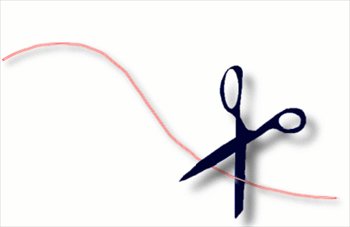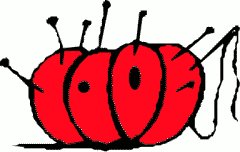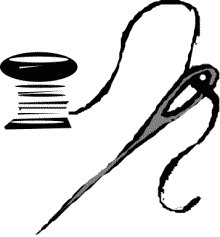You can make groovy, wide-leg
jeans for a costume party, play, or retro dress-up day at school. A few
supplies and about an hour of your time are all that is needed. Bring back the
style of the seventies without spending a lot.
Supplies for Groovy Jeans
You will need a pair of old jeans, sharp shears
for cutting denim, sewing thread thread, a denim needle for your sewing machine, and 1/3 to 1/2
yard of outrageously colorful print fabric. Large flowers or psychedelic
designs are great.
Cutting the Groovy Jeans
Cut off the jeans legs at the knee. This is a
great way to recycle a pair of jeans with torn knees. Next, measure the
circumference (distance around) one leg of the jeans. Multiply this measurement
by two, since the new, wide legs should be about twice as full as the knee
circumference. This is your width measurement, W. Now measure the distance from
the knee to the desired finished length of the jeans and add 2 inches for the
top seam and the bottom hem. This is your length measurement, L. Cut two
rectangles from your print fabric. Each rectangle measures W by L.
Sewing the Groovy Jeans
You are essentially making two miniature
gathered skirts and attaching one "skirt" to each jeans leg. Sew the
sides that measure L together to form two tubes of fabric, one for each leg.
Press seams open. Gather the tops of the tubes with two rows of basting. Pin the right sides of the gathered tubes to the right side of
the jeans knee openings, adjusting gathers to fit. Stitch around legs just
outside the gathering stitches.
Try on the jeans and mark the hem. Machine hem
the new flared legs. Your groovy jeans are finished!
Additional Ideas
Use leftover print fabric to make a groovy
headband to wear with your new jeans. Just cut a strip of fabric long enough to
tie around your head. Either hem the raw edges or just fold the fabric to hide
the raw edges before tying the headband.
Patches were popular on seventies jeans. Make
your own patches by cutting hearts, squares, or big flowers from scraps of the
print fabric. Sew patches on jeans by topstitching ¼ inch from edges. Let edges
of patches fray.
Finally, waste not, want not. Save the denim
legs cut from the old jeans. Use the worn denim fabric to repair old jeans or
keep saving denim until you have enough scraps to recycle into a patchwork
blanket.




